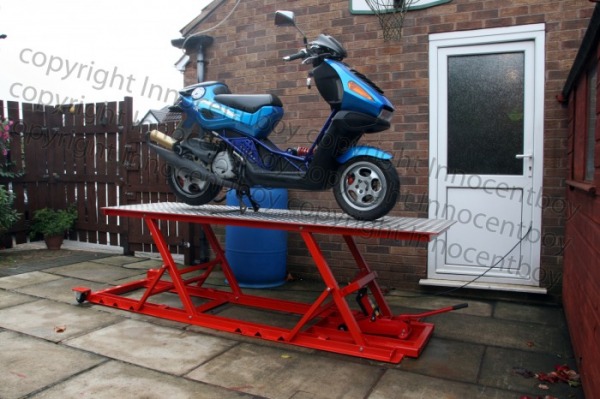I'm liking the root idea a lot but am not liking the missing diagonals width-wise on the merely-bolt-hinged legs to stop sideways shifting as has been noted by Tkent.These could be steel strapping. Though I do "hear" that the jack itself is controlling the "sideways" or that more 2x4s on the sides of the legs will stop this, I'm not happy.
I hear the anti-cantilever objection too and go further to say that while it works for a forklift, the pictured bench seems to "Want" a 6x6 beam with the jack located centrally. A steel beam of the same dimensions would maybe suit as the cantilever pictured...mostly because the FASTENING can hold better in steel
This unfortunately means lowered height is ~12" (ie:3.5+5.5+2.75+deck plywood) versus the 7" height when lowered (ie:3.5+3.5) it has now...?

So, I am nixing the 2x4s in my head and using the VERY rigid Beam itself...or rather,two beams with a deck between and small weak overlap of the deck suitable only for a few tools...=~8.5" height when lowered (ie:2.75+5.5+ply)
Next, one end is hinged on a fixed height and the jack itself centrally located can be used so that one end of the Tapered Beam is tipped down for loading the bike.....and jacked-up for the Event...of course, I need my jack elswhere, so that loose end needs blocking in place. hmmmmmmm...
.png)
 )
)



Leave a comment: